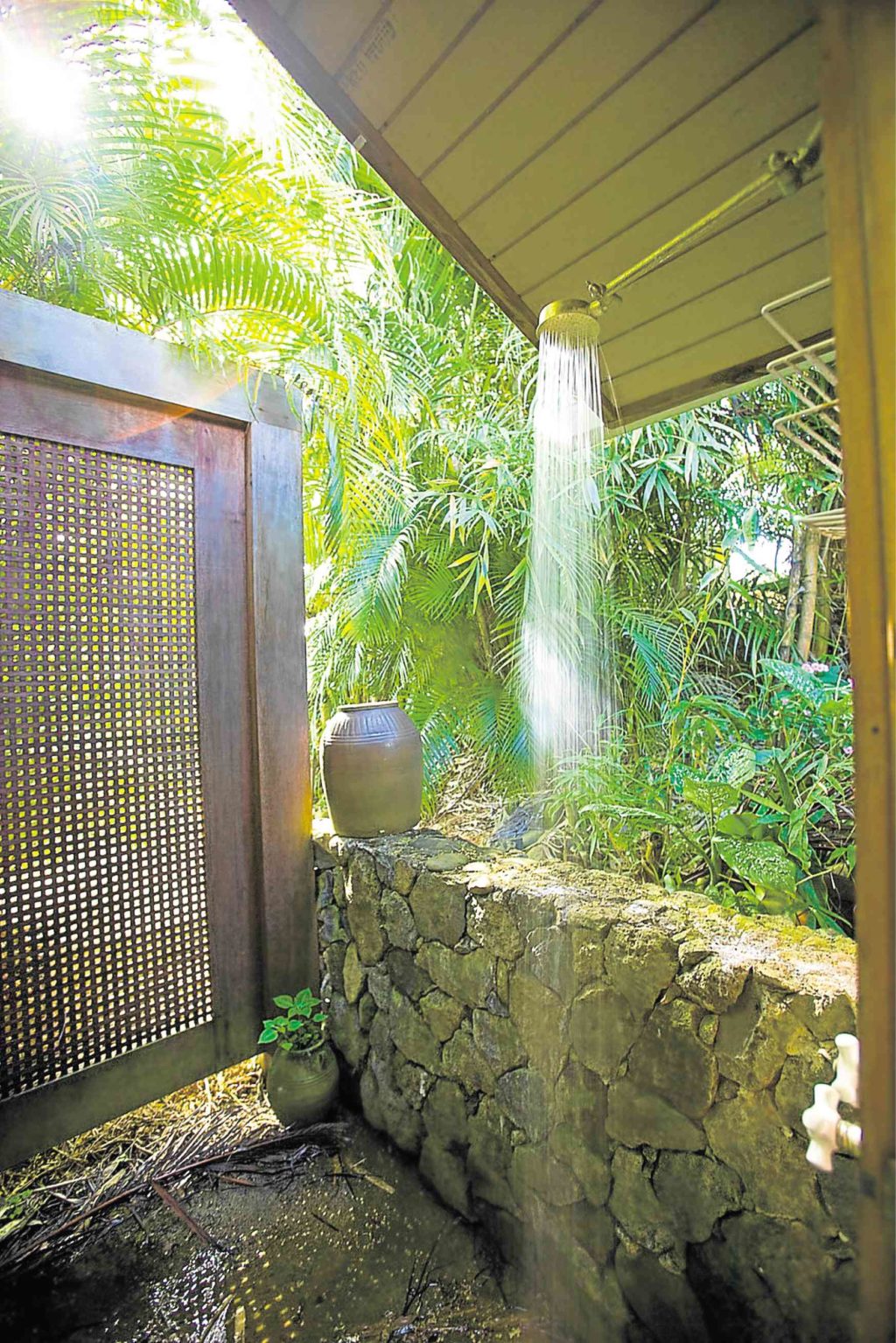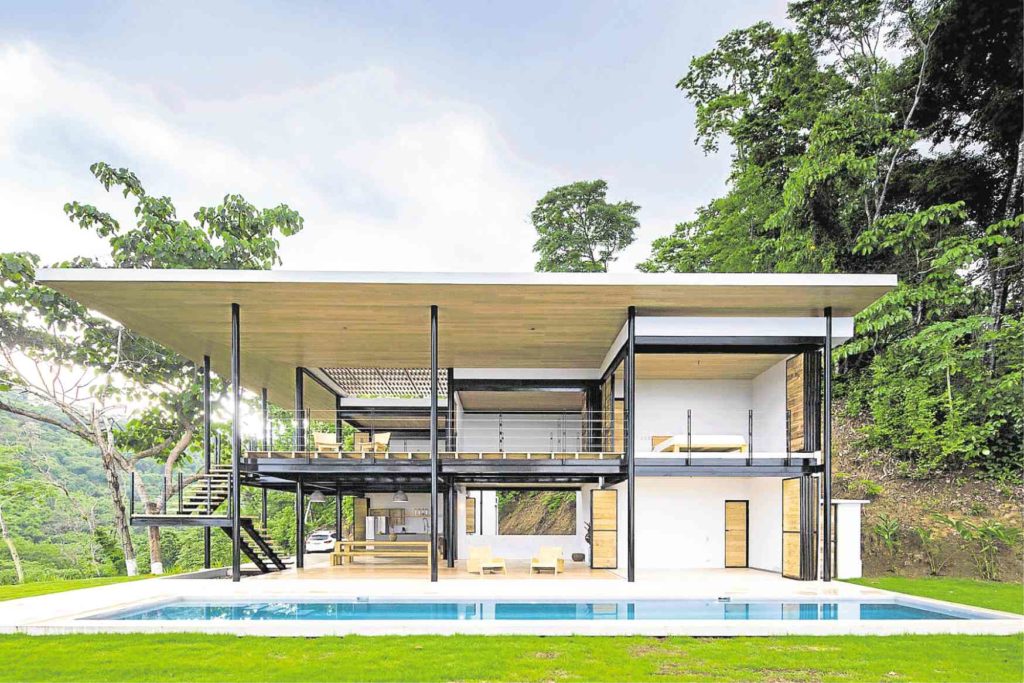A home without walls

An outdoor shower can be protected by high fences, outdoor screens and vegetation.
Can you imagine living in a house without walls?
For many, the idea of living in an open space might seem terrifying as many of us are paranoid when it comes to protecting our privacy. Solid barriers are often used to guarantee protection from prying eyes and nosy neighbors.
Unfortunately, these elements also keep out light, ventilation and views. This is a loss for a house situated in a tropical country like the Philippines as natural resources create a more relaxing atmosphere and help us save on energy.
Though you may not realize it, our homes in the past were technically wall-free. Our ancestors built nipa huts with only bamboo or sawali partitions. Light and wind pass through these thin materials without compromising privacy. Because of these features, these huts were known to be airy and comfortable.
Considering this, what’s keeping us from adapting the wall-free home to suit today’s living standards?
Benefits
Dr. Jackie Craven, a former columnist for House and Garden magazine, identified several benefits of wall-free structures. For one, homes with minimal walls are more accommodating to people with dementia. Such a space would allow them to move with less difficulty and confusion.
Fewer walls also translate to savings when it comes to construction. More often than not, open plans are cheaper and faster to construct because they entail less work. This kind of design also creates spaces which are flexible in terms of use.
Lastly, open plans allow wind and light to easily circulate inside the home. This helps us save in terms of maintenance and operational expenses. The lack of walls keeps our homes comfortable even in tropical weather. It also adheres to good feng shui as it allows positive energy to quickly fill up our living spaces.
Alternatives to walls
Foregoing solid walls does not actually imply sacrificing your privacy. You can still protect living spaces through creative space planning, movable partitions, screens and other privacy elements.
For instance, tall shrubs and trees provide visual barriers while allowing wind and light to pass through. To protect yourself from rain, consider installing wide roof eaves, retractable canopies, skylights and polycarbonate roofing. You can also use blinds or curtains to temporarily enclose areas.
Bathrooms remain essentially private, but you can opt for high fences in lieu of solid walls. A unique spin on bathing areas involves combining a garden and bathroom in an enclosed, outdoor space. Just make sure access to this area is restricted.
To explore more wall-free options in house design, it is best to consult an architect.
‘Ocean Eye’

The Ocean Eye home by Benjamin Garcia Saxe exemplifies a wall-free house.
A stunning residence that lies along Santa Teresa Beach in Costa Rica shows the splendor of a wall-free home. The brainchild of Costa Rican architect Benjamin Garcia Saxe, the house is dubbed the “Ocean Eye” because of its clear connection with its surroundings.
Situated in a lush tropical setting, the house allows for visual transparency with minimal walls and open areas.
With just one glance, visitors can already see most of the house. The dwelling is made up of two floors, with the ground floor intended for visitors. Most of the rooms are open to the elements, blurring the lines between indoor and outdoor spaces.
Built of wood, steel and glass, the Ocean Eye blends well with its jungle and beach backdrop. It is a modern house that redefines tropical architecture.
Despite its open design, the house still functions effectively as a private residence. The roof eaves are wide all around, protecting its spaces from rainfall. The bedrooms and other selected spaces can be enclosed with movable partitions, providing privacy should the need arise. The bathrooms remain concealed with permanent walls or high fences.
The house remains green yet efficient, compromising neither function nor privacy in the name of sustainability.
Overall, walls are often used to enclose houses.
But if you think about it, they are optional features for your home. A house without walls may seem radical, but it is possible and livable if it is well-designed. This feature might be for you if you want to maximize wind and light in your home.
If done right, wall-free homes provide flexibility and comfort in tropical living, allowing you to live right inside the jungle.
Sources: Andres Garcia Lachner; Harley Photo via Wikimedia Commons; www.houzbuzz.com; www.thoughtco.com; www.archdaily.com